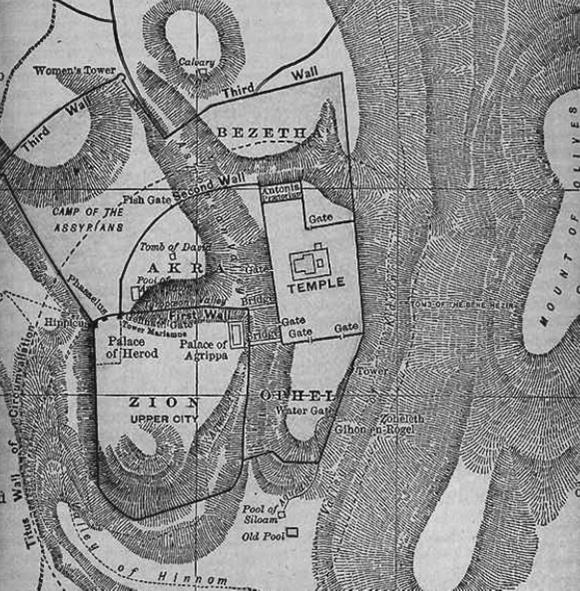|
Gates
 In Israelite cities, as in their Canaanite counterparts, the gate, beyond its defensive function, also served as an important centre of public life. The gates were suspended on posts, and closed by bars and locks (Judges 16:3; Neh.3:14) and were roofed over (2 Sam.18:24). In front of the gate there was an open place (2 Chron.32:6; Neh.8:1,3,16), lined with benches where the elders sat, and economic and judicial activities took place. Great crowds gathered in the field in front of the gate, the unusual site of the threshing ground. The inner gate was dominated by two towers (2 Chron.26:9), containing chambers (2 Sam.18:33). Above the roof of the gate watchmen were posted to oversee the road (2 Sam.18:25‑27); in case of emergency, they would sound trumpets (Ezek.33:2‑3). Within the gate, on both sides of the passage, were chambers where the guards could rest; these also served as storage spaces (Ezek.40:7; 1 Kings 14:28). The gates were often richly embellished. The gates of Solomon’s Temple in Jerusalem were decorated with "cherubim, palm trees and open flowers on them and overlaid them with gold applied evenly on the carved work" (1 Kings 6:35 NKJV; Ezek.41:25). In Israelite cities, as in their Canaanite counterparts, the gate, beyond its defensive function, also served as an important centre of public life. The gates were suspended on posts, and closed by bars and locks (Judges 16:3; Neh.3:14) and were roofed over (2 Sam.18:24). In front of the gate there was an open place (2 Chron.32:6; Neh.8:1,3,16), lined with benches where the elders sat, and economic and judicial activities took place. Great crowds gathered in the field in front of the gate, the unusual site of the threshing ground. The inner gate was dominated by two towers (2 Chron.26:9), containing chambers (2 Sam.18:33). Above the roof of the gate watchmen were posted to oversee the road (2 Sam.18:25‑27); in case of emergency, they would sound trumpets (Ezek.33:2‑3). Within the gate, on both sides of the passage, were chambers where the guards could rest; these also served as storage spaces (Ezek.40:7; 1 Kings 14:28). The gates were often richly embellished. The gates of Solomon’s Temple in Jerusalem were decorated with "cherubim, palm trees and open flowers on them and overlaid them with gold applied evenly on the carved work" (1 Kings 6:35 NKJV; Ezek.41:25).
It was at the city gate that Abraham bargained with Ephron the Hittite over the cave of Machpelah (Gen.23:10,18). A man who had killed unintentionally, and consequently requested admission to a city of refuge, was first interrogated by its elders at the gate (Josh.20:4). The gate remained an important centre of urban activity up to the end of the Israelite kingdom, but its judicial functions were transmitted to a special building, or a room in the governor’s palace, or in a temple (Deut.17:8‑12; 1 Kings 7:7). Public punishment was administered at the gate to certain transgressors, such as persons who served other gods (Deut.17:5); a rebellious (Deut.21:19‑21); or a man who lay with a betrothed girl (Deut.22:23‑24)

Map ancient Jerusalem in Roman times
Wigoder
|